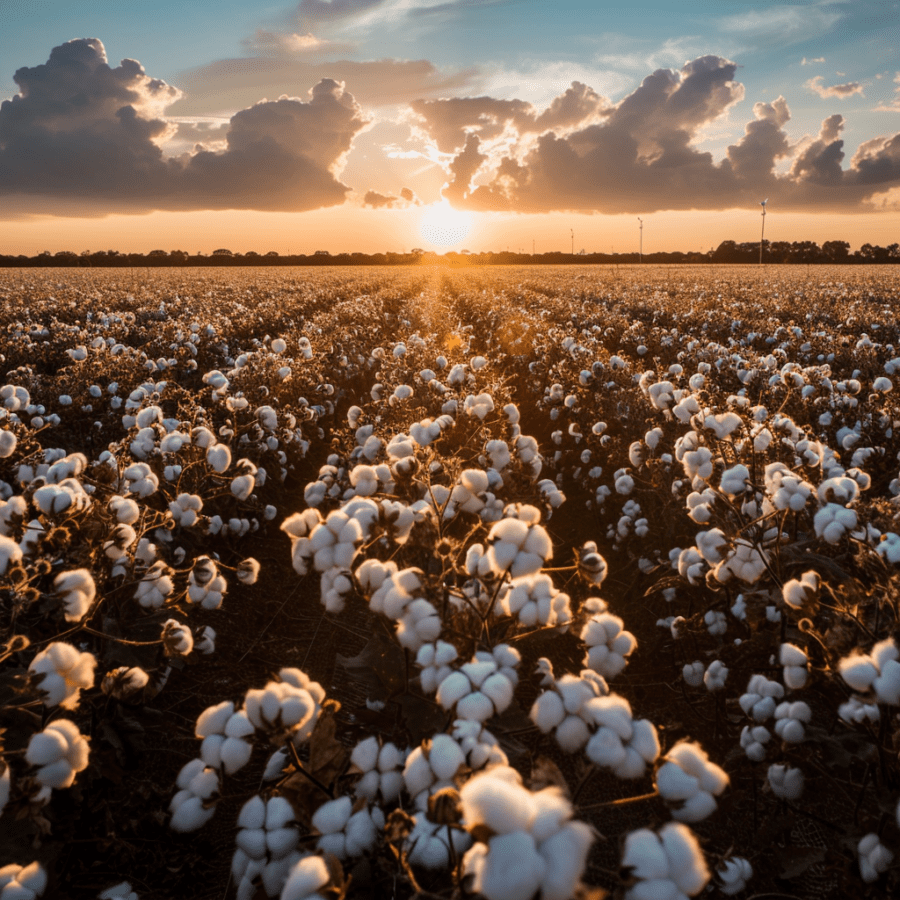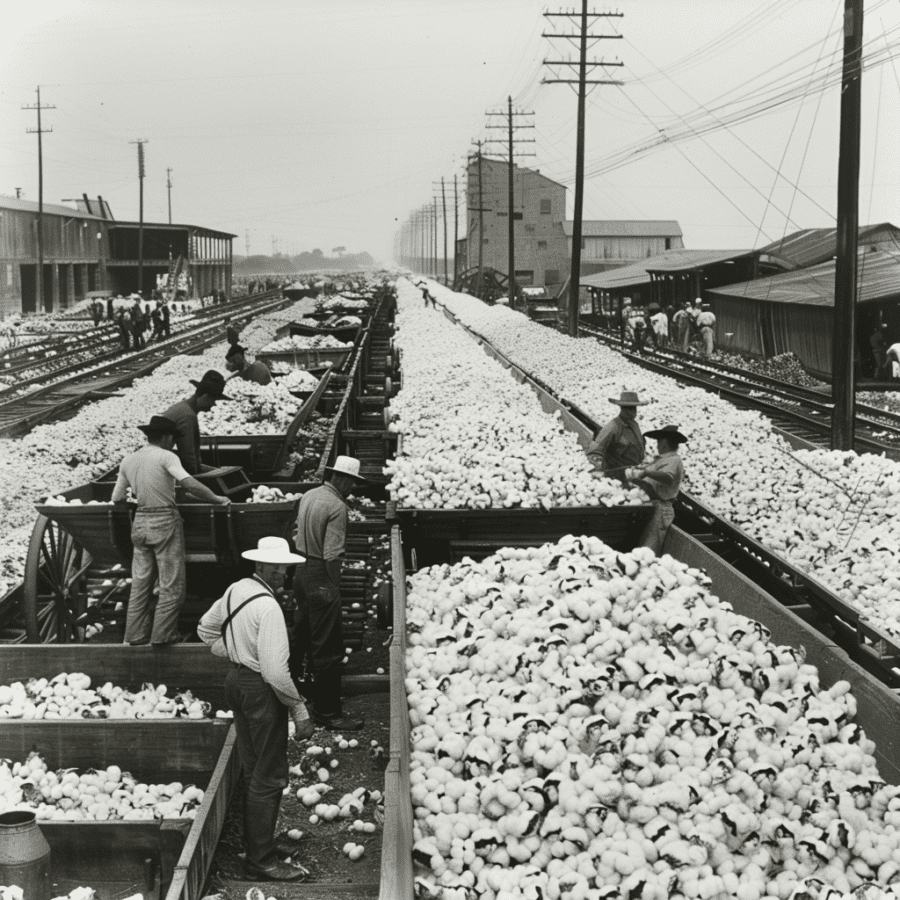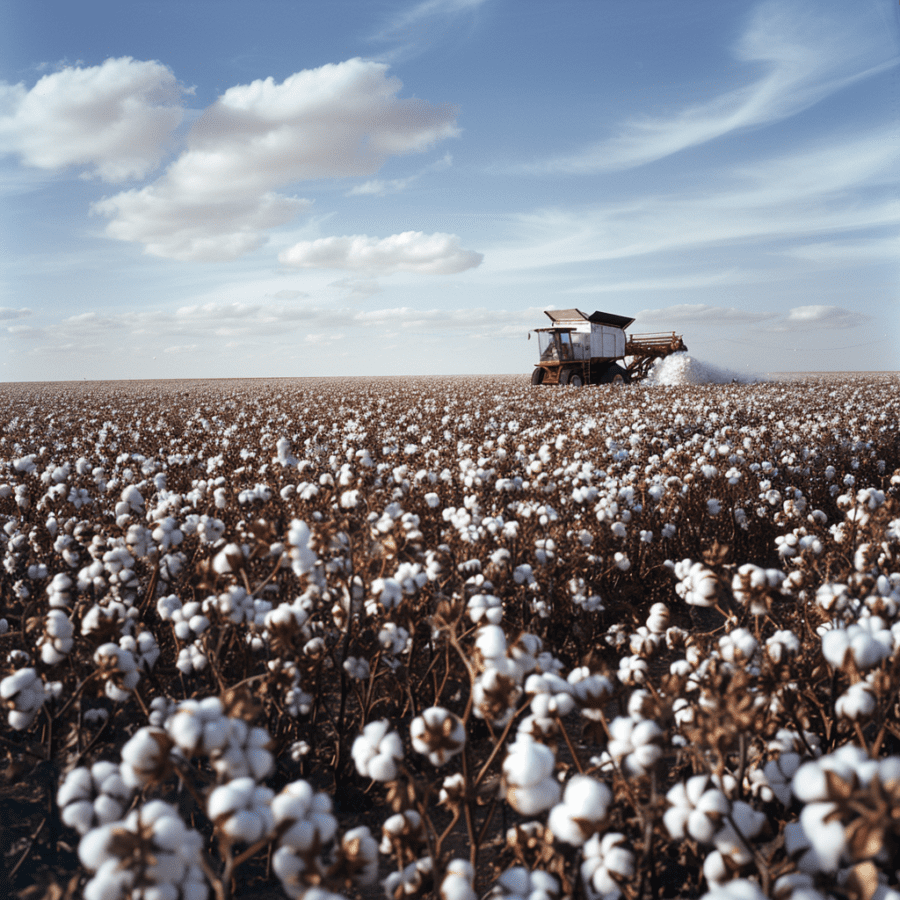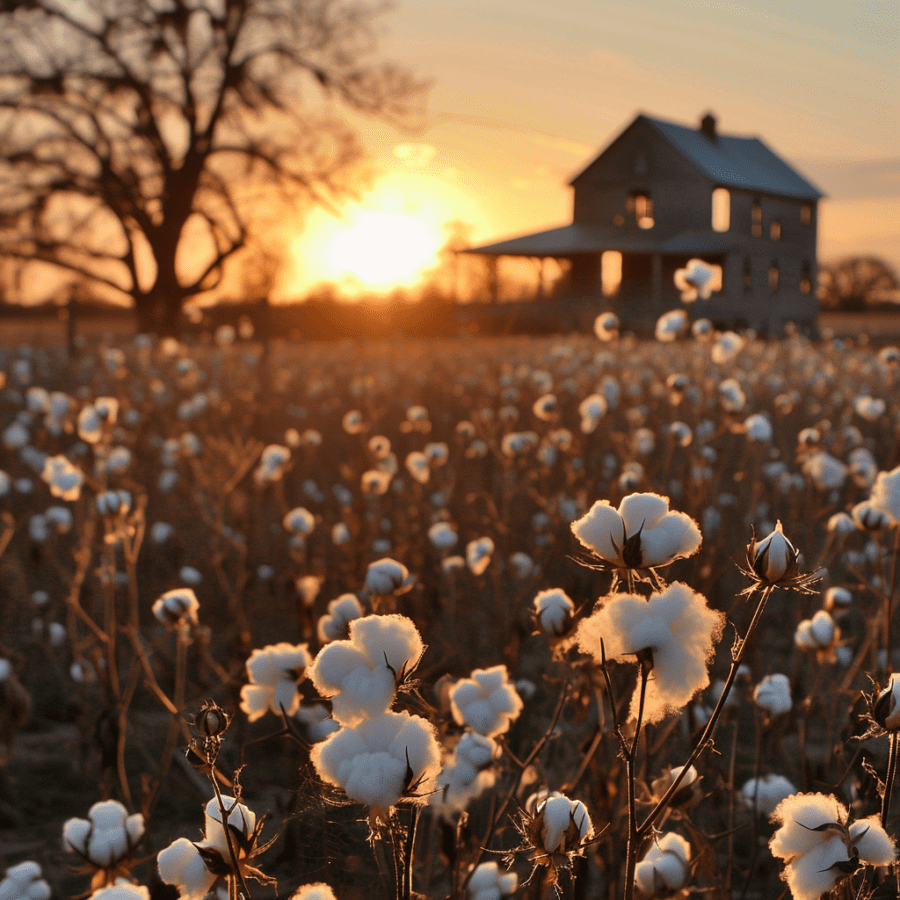Share the post "Unraveling the Threads: How Cotton Weaves its Power into the Texas Economy"
Historical Significance of Cotton
Delve into the annals of Texas history, and you’ll find cotton ingrained in its fabric. As early as the 1820s, Texas settlers cultivated cotton as a primary cash crop. Texas emerged as a prominent player in the international cotton market, thanks to this fluffy white gold. By the end of the 19th century, more than three-fourths of Austin County’s farmers were cotton growers, and cotton gins were the lifeblood of rural communities. Much like the Alamo and oil booms, cotton planting and trading have shaped the Texas economy and lifestyle in numerous ways.
Think of the settlers from the Old South who brought cotton cultivation techniques and enslaved labor towards cotton production. Or, imagine the sharecroppers and tenant farmers who labored under the Texas sun, shaping an industry that has stood the test of time.

Cotton’s Economic Contributions in Modern Texas
Fast forward to present day, and cotton’s contributions have not waned. Cotton remains a pillar of the Texas economy, generating billions of dollars annually.
According to the Texas Department of Agriculture, in 2018, Texas cotton farms produced 7.2 million bales of upland cotton, representing approximately 50% of the United States’ total production. These cotton sales pumped an estimated $2.2 billion directly into the Texas economy, that’s more than any other agricultural crop.
Despite changes in technology and shifts in labor markets, cotton still provides thousands of direct and indirect jobs across Texas, from farmers and ginners to marketers, exporters, and retail employees.
Here’s how cotton lays the economic groundwork in modern Texas:
- Cotton Production: Texas producers cultivate cotton on an average of 6 million acres each year. This production supports individuals and families in rural communities.
- Cotton Ginning: Processing raw cotton in gins is a significant provider of rural employment.
- Cotton Exporting: As the leading exporter of cotton in the U.S., Texas generates substantial income from overseas sales.
- Related Industries: Industries such as cotton seed oil production, shipping, and retail fashion also thrive, thanks to cotton.
In short, cotton’s roots run deep in Texas’ fertile soil. Its historic significance and enduring economic strength propel the Texas economy forward, making cotton the true white gold of the Lone Star State.

The Cotton Supply Chain in Texas
From Farm to Market: The Process
The journey of cotton in Texas starts with planting seeds, and before you know it, you’re watching fluffy bolls in vast fields. But what happens between cotton’s growth on the farm and its emergence on the market? Let’s take a closer look at the stages:
- Planting: Farmers sow cotton seeds in the fertile Texan soil, typically between February and June, when conditions favor growth.
- Harvesting: By fall, those cotton flowers transform into bolls containing the valuable fibers. It’s time to send in the cotton pickers and strippers.
- Ginning: Next, the picked cotton heads to a local gin, where seeds get separated from the fiber, and it’s baled for transport.
- Spinning: Bales reach a spinning mill to be spun into thread or yarn.
- Export or Manufacturing: Spun yarn enters the domestic market for garment manufacturing or packs up for international export.
Remember, each stage requires skilled workforce and intricate machinery, thus bolstering local industries across Texas.
Job Creation and the Cotton Industry
Talk about making an impact, and the cotton industry stands tall, creating jobs throughout its supply chain. Let’s dig into the numbers and roles:
- Farming: Thousands of farmers find employment in the fields of Texas, carrying out the tending and harvesting of cotton crops.
- Ginning and Spinning: These operations require skilled workers and technicians, resulting in additional job creation.
- Transportation: Moving bales from farms to gins, and then to spinning mills or ports, involves a robust logistics and transportation network.
- Manufacturing: For cotton staying stateside, jobs in textile manufacturing and retail are waiting.
- Export: For cotton going overseas, roles in international trade and port operations come into play.
Hence, with every stage in the cotton supply chain, there’s an injection of job opportunities in Texas. Whether it’s tending to fields, transporting bales, or spinning fibers into yarn, the cotton industry strengthens communities with its varied employment prospects. It’s truly remarkable how deeply and far-reaching this ‘white gold’ impacts the Lone Star State.

Cotton’s Future in the Texas Economy
Building upon an illustrious history, cotton’s future within the Texas economy promises a trajectory of innovation, policy changes, and market developments. This section sheds light on those aspects that significantly influence the way forward for cotton in Texas.
Innovations and Research in Cotton Production
In the sphere of cotton production, innovation and research play crucial roles. These crucial components breathe life into cotton’s future in Texas.
- Advances in Genetic Modifications: Cotton breeders constantly push the envelope, enabling cotton plants to tolerate both drought and heat. Indeed, the Texas A&M AgriLife Research team has made significant progress in this area.
- Smart Technology in Agriculture: Farmers now use technology like drone surveillance, automatic irrigation systems, and precision farming. Such technology not only increases yields but also conserves resources.
- Eco-friendly Pesticides: Research fosters the development of green solutions to pest control. These solutions help control pests like the boll weevil, infamous for decimating cotton crops while also protecting the environment.
Policy and Market Developments
Policy and market developments dictate the larger landscape that shapes cotton’s future in Texas. Attuned to global trends and domestic needs, Texas shapes its policy environment to sustain and grow cotton production.
- International Trade Agreements: As the largest cotton-exporting state, Texas carefully monitors international trade agreements. Any changes can increase or decrease demand, directly affecting the state’s economy.
- Policies Favoring Sustainability: With heightened global awareness about sustainability, legislators formulate policies favoring green practices. This support fosters growth as they encourage sustainable farming methods within the cotton industry.
- Market Demand for Cotton: As market trends veer towards organic and hand-loom products, the demand for cotton is poised to surge. Texas stands ready to supply high-quality cotton, thus boosting its economy further.
In this labyrinth of possibilities, one thing remains certain: the continued significance of cotton in Texas. As each moment unfolds, so do fresh paths, leading Texas towards a dynamic future with cotton at its core.

Cotton’s Future in the Texas Economy
Two significant factors—innovations and research in cotton production and policy and market developments—have shaped the role of cotton in the Texas economy as it has evolved. Let’s take a closer look at these key influences.
Innovations and Research in Cotton Production
In the realm of cotton production, breakthroughs in research and innovative technologies are pushing boundaries. Through genetic modifications, the cotton crops grown today are more robust and resistant to pests and harsh climate conditions. For instance, the Bt cotton strain, genetically modified to ward off insects, has seen an increase in productivity by over 15%.
Next, let’s consider the ‘Internet of Things’ (IoT) in agriculture. Farmers are integrating smart technologies, such as digital sensors, GPS, and drones to monitor crop condition and harvesting techniques. To get a sense of how smart technology is transforming farming, look at Precision King’s automated irrigation system. They’ve reported a 30% reduction in wastage of resources, boosting profitability for farmers.
Moreover, the increased use of eco-friendly pesticides in cotton farming is driving an earth-conscious wave in Texas’s cotton industry. For instance, biopesticides like spinosad and pyrethrum promise sustainable farming while delivering high-yield cotton crops.
Policy and Market Developments
Policy and market developments significantly govern the prospects of cotton in the Texas economy. For instance, international trade agreements play a pivotal role in shaping the cotton market. Ratification of the USA-Mexico trade pact has noticeably improved revenue in the cotton industry by over 12% in the first quarter itself.
Further, sustainability policies are urging cotton farmers to adopt low-impact farming practices. An excellent example here would be Texas’s Evolution Program – aiming to increase cotton-based earnings while reducing the ecological footprint.
As the world’s appetite for eco-friendly products grows, the demand for organically-grown cotton keeps spiraling. In fact, market demand for cotton has seen an upswing of 20% in the last five years.
Evolving market trends and policies, combined with strides in technology and research, ensure that cotton stays relevant to Texas’s economy. Tethered to its past, the cotton industry in Texas strides towards a future filled with promise. Remember, as progress unfolds, it’s clear that cotton isn’t just a part of Texas’s history – it’s a key to its future.
Share the post "Unraveling the Threads: How Cotton Weaves its Power into the Texas Economy"
Christian Linden is a seasoned writer and contributor at Texas View, specializing in topics that resonate with the Texan community. With over a decade of experience in journalism, Christian brings a wealth of knowledge in local politics, culture, and lifestyle. He holds a Bachelor's degree in Communications from the University of Texas. When he's not writing, Christian enjoys spending weekends traveling across Texas with his family, exploring everything from bustling cities to serene landscapes.











